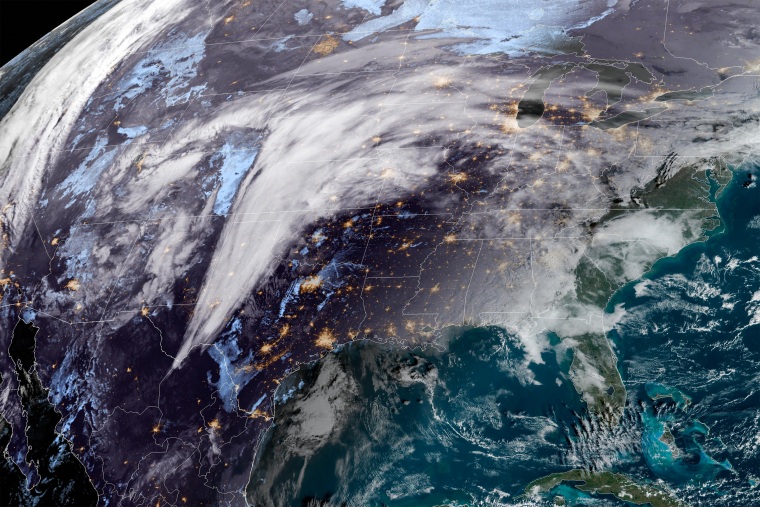Strong winds damaged an Arkansas school Monday as classes were in session amid a weather system forecasters said could produce tornadoes in the South, authorities said.
No injuries were reported at the Jessieville School in a storm that was thought to be a tornado around 2:44 p.m., the Garland County Sheriff’s Office. said in a statement.
The National Weather Service will work to confirm if it was a tornado, the sheriff’s office said. He usually does it with storm survey equipment.
The weather in Jessieville, a community about 45 miles west of Little Rock, struck Monday when about 6 million people were under a tornado watch covering that state, as well as parts of Louisiana, Oklahoma, and Texas.
More to the north, A winter storm moving across the Central Plains and Upper Midwest this week was expected to bring heavy snow, sleet and freezing rain to parts of the US.
The storm was expected to bring snow to the Central High Plains as it moved northeast toward the Great Lakes, likely producing moderate to heavy snow, sleet and freezing rain by Tuesday, the National Weather Service said.
«Heavy snow rates of 1 to 2 inches per hour may be accompanied by thunder, especially in southern South Dakota and far southwestern Minnesota,» the weather service said in a forecast update early Monday. More than 12 inches of heavy snow is expected to accumulate rapidly from the Nebraska Panhandle to southwestern Minnesota, he said.
Gusty winds are also expected to produce areas of drifting snow, which the weather service warned could lead to snow-covered roads and reduced visibility, creating potential travel hazards.

On North Platte, Nebraska, 1/4-inch ice had accumulated Monday afternoon, the weather service there said. It will change to all snow Monday night, and they could fall about 2 feet in the Ainsworth area, she said.
Moisture from the Western Gulf of Mexico was expected to move northward over the West Gulf Coast/Lower Mississippi Valley, with the Plains front moving into moisture, resulting in severe showers and thunderstorms. An increased risk of severe thunderstorms was forecast over the Lower Mississippi Valley Monday through Tuesday morning.
Thunderstorms could bring frequent lightning, strong gusts of wind, hail and «a few tornadoes,» the National Weather Service said.
Heavy rain is also expected in connection with thunderstorms, and the weather service is issuing a slight risk of excessive rainfall in parts of the mid/lower Mississippi Valley Monday through Tuesday.
«The associated heavy rainfall will mainly create localized areas of flash flooding, with urban areas, roads and small streams being the most vulnerable,» the weather service said.
There was an increased risk of severe thunderstorms Monday afternoon and evening in parts of eastern Texas, southeastern Oklahoma, Arkansas, and northern Louisiana.
About 19 million people were in the storm hazard zone that carries a risk of tornadoes, damaging wind gusts, flooding, downpours, and hail.
Parts of Arkansas, western Tennessee, northern Louisiana and eastern Texas were under flood watches through Monday night.
On Tuesday, severe storms are expected to continue rumbling to the east and affect areas throughout the Tennessee Valley and the central Gulf Coast.
It comes after a «once-in-a-lifetime» snowstorm killed dozens last month, with New York’s Erie County, which includes Buffalo, at the center of the storm’s most intense conditions.
Buffalo Mayor Byron Brown said on MSNBC’s «Morning Joe» that the storm was «probably worse than anything this city has seen in over 50 years.»

